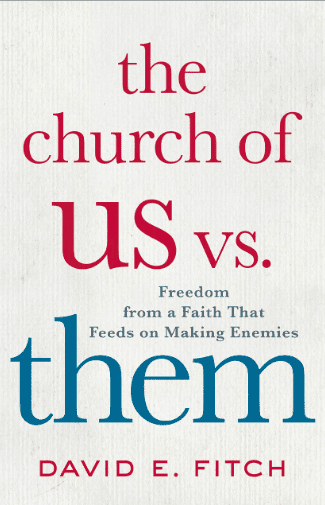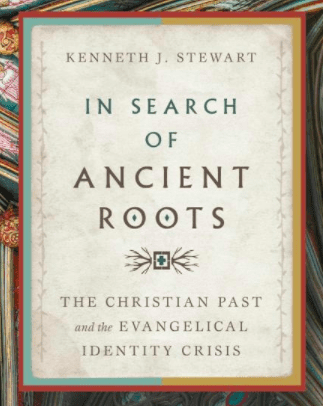 Tim Keller contends that in the first half of the 20th Century American evangelicalism went pietistic, and by that he means “ignore culture and put all stress on conversions and on the spiritual growth of individuals” (184, in Center Church). Two quick points before we move on:
Tim Keller contends that in the first half of the 20th Century American evangelicalism went pietistic, and by that he means “ignore culture and put all stress on conversions and on the spiritual growth of individuals” (184, in Center Church). Two quick points before we move on:
First, he’s right: far too many of evangelicals withdrew from culture and were largely indifferent to society and culture, and their focus was personal salvation and transformation. Second, I’m not sure Keller’s read the spectrum of pietism because classic Pietism, that which grew out of the German Lutheran church through the voices of Spener and Francke, was not the kind of pietism he is describing. We might be better off describing the 1900s to 1950s the era of separatist fundamentalism than Pietism. Nonetheless, the big picture’s accurate: separationism ruled the day, and along with that an obscurantism and anti-intellectualism. Carl Henry put paid to separationism. How to engage?
Through the 20th Century scholars sought to clarify the relationship of church and culture/society/state. Keller contends the Kuyperian model has carried the day for evangelicals, and he’s right there… it has become the dominant model. Two shifts can be seen: the Religious Right and the Seeker Church movement, one focusing on transformation through political process while the second is through relevance and personal conversion. These two, in turn, were met by the emerging movement.
Which of the four models below is your approach? What do you think are the top factors in your consideration?
Which leads Keller to a substantive chapter on “cultural responses of the church” and this amounts to a mini-text on the church and culture. A Kuyperian kind of “Christ and Culture” made famous by H. Richard Niebuhr’s Christ and Culture. (A book read for a generation by Wheaton students.) Keller finds four models, and he says more than this — about a way forward — but that’s for another post:
Transformationist, Relevance, Counterculturalist, and Two Kingdoms.
1. Transformationist: Christians pursue their vocations with a Christian worldview and thereby changing/influencing or transforming culture. Operate as Christians; do so in interaction with non-Christians. There is great diversity here in both theory and in how to engage. This model values work as vocation and see the problem in secularism and the naked public square.
But there are problems and Keller points these out: too cognitive in its view of worldview (JKA Smith pushes against this); an underappreciation for the church/local church at times; tend toward triumphalist and self-righteous overconfidence; too much stock in politics as the way to change culture; and naivete about power.
2. Relevance: Christianity is fundamentally compatible with culture because God is at work redemptively in culture and the historical process. This is classical Protestant liberalism and he sees it in liberation theology. They tend to be optimistic about culture and humans; focus on the common good; avoid “worldview” language; focus on being relevant; little distinction between church and culture. He pokes at Robert Schuller (a too-easy and unimportant example), Rick Warren and Bill Hybels, McLaren and Tony Jones, Darrel Guder, liberationists.
Problems: they are quickly dated; culture gets authority over Scripture; focus too much on art and service and justice; distinctiveness of church gets blurred.
3. Counterculturalist: the church is a contrast society. “the kingdom is manifest primarily as a church community in opposition to the kingdom of this world” (205). These folks tend not to see God at work redemptively through cultural movements; avoid the quest for relevance; criticizes the Religious Right, liberal mainliners and megachurches; focus is not on changing culture. He sees Hauerwas, Hays, Willimon, Yoder, Millbank, Claiborne.
Problems: too pessimistic about cultural change; tends to demonize capitalism; does not contextualize enough; downplays justification and substitutionary atonement; weaker on evangelism. Yes, some, no, not as often as he suggests, who’s not?
4. Two Kingdoms. The least known model, as it is Lutheran. God rules all in two ways: common kingdom and redemptive kingdom. They value vocation by looking for distinctively Christian approaches; no distinct Christian civilization; not out to heal culture; not transformationist in orientation; secular powers are what God has designed so a more accepting approach toward state and culture and society as the realm in which God does those sorts of things; there one finds common grace. There is a spectrum here as well.
Problems: too much weight on common grace; not recognizing that much good comes through Christian approaches; too easily slides into living on a religiously neutral basis; social quietism; too great of a hierarchy of laity and clergy.
Keller has two major thoughts on how to get beyond the four models and beyond pietism:
First, determine how redeemable, transformable, alterable culture is on the basis of how fallen one sees humans. Here is leaning on Carson, which he does quite often in this book.
Second, again from Carson, he believes in keeping the major themes of the salvation/soterian story at work all the time: creation, fall, redemption/restoration.
This means each of the four models has something to offer; each has weaknesses and it leads him to see four central postures at the heart of all of them:
1. From Two Kingdoms we learn of Humble excellence
2. From Relevance we learn of the Common good
3. From the counterculturalist we learn the Church as counter-culture
4. And from the transformationalist we learn of our Distinctive worldview











